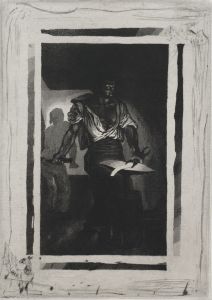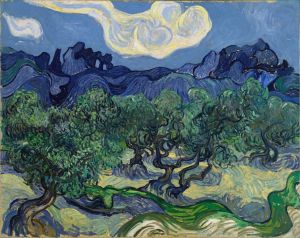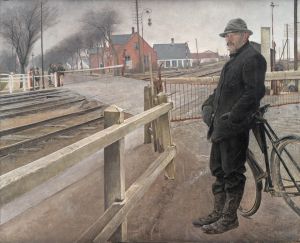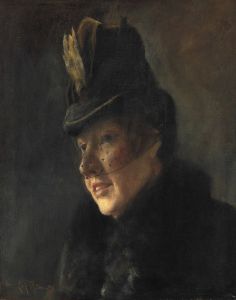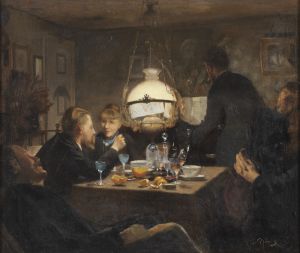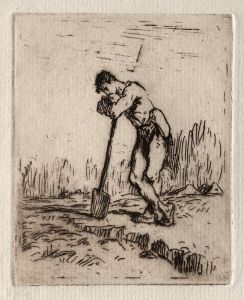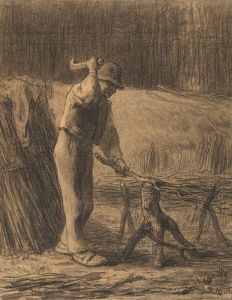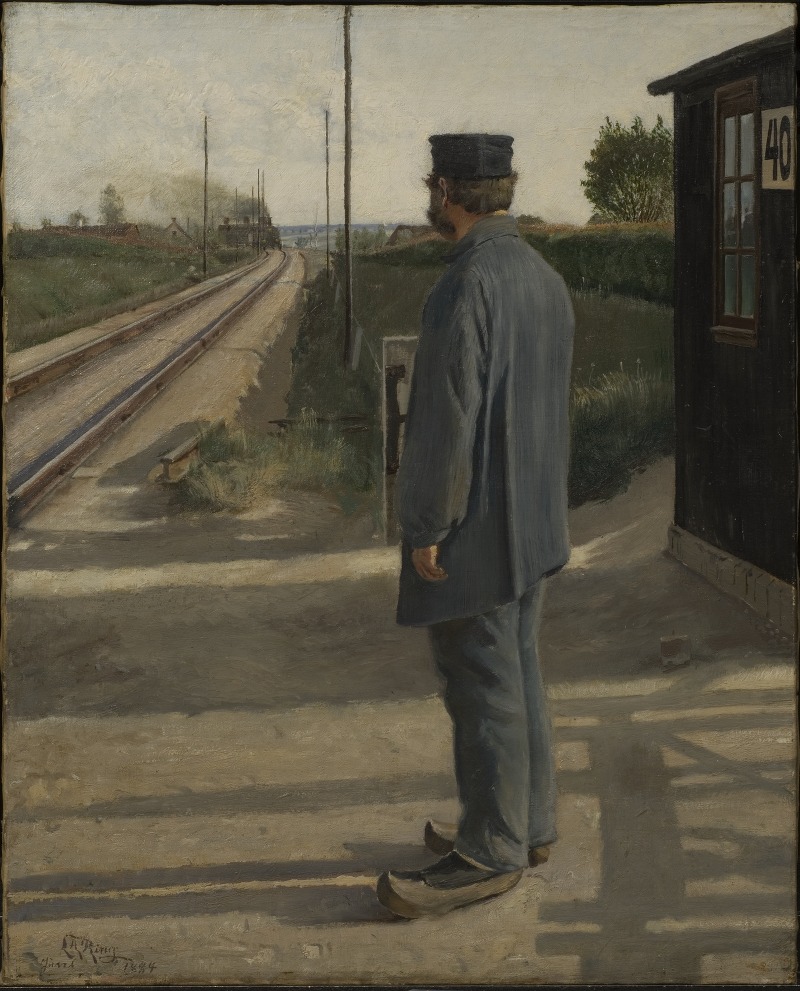
The Lineman
A hand-painted replica of Laurits Andersen Ring’s masterpiece The Lineman, meticulously crafted by professional artists to capture the true essence of the original. Each piece is created with museum-quality canvas and rare mineral pigments, carefully painted by experienced artists with delicate brushstrokes and rich, layered colors to perfectly recreate the texture of the original artwork. Unlike machine-printed reproductions, this hand-painted version brings the painting to life, infused with the artist’s emotions and skill in every stroke. Whether for personal collection or home decoration, it instantly elevates the artistic atmosphere of any space.
Laurits Andersen Ring, a prominent Danish painter, created "The Lineman" in 1884. This painting is a significant work in Ring's oeuvre, reflecting his interest in everyday life and the working class, which were common themes in his art. Ring was part of the Danish Realism movement, which sought to depict ordinary people and their environments with sincerity and attention to detail.
"The Lineman" portrays a lineman, a worker responsible for installing and maintaining telegraph and telephone lines, which were crucial for communication in the late 19th century. This subject matter highlights the technological advancements of the time and the changing landscape of work and communication. The painting captures the lineman in a moment of concentration and effort, emphasizing the physical demands and skill involved in his work.
Ring's style in this painting is characterized by his meticulous attention to detail and his ability to convey the textures and materials of the lineman's clothing and equipment. The composition is carefully balanced, with the lineman positioned prominently in the foreground, drawing the viewer's attention to his task. The background is rendered with a softer focus, suggesting the rural setting where such work often took place.
The color palette of "The Lineman" is typical of Ring's work, featuring earthy tones and a naturalistic approach to light and shadow. This use of color enhances the realism of the scene and underscores the connection between the worker and his environment. Ring's ability to capture the subtleties of light and atmosphere adds depth and dimension to the painting, making it a compelling representation of a moment in time.
Laurits Andersen Ring was known for his ability to infuse his paintings with a sense of narrative and emotion, and "The Lineman" is no exception. The painting invites viewers to consider the life and labor of the lineman, offering a glimpse into the daily realities of a profession that was essential yet often overlooked. Through his art, Ring provided a voice for the working class, highlighting their contributions to society and the dignity of their labor.
"The Lineman" is an example of Ring's commitment to realism and his interest in the social and technological changes of his era. It reflects his broader artistic goals of portraying the truth of human experience and the beauty of the ordinary. This painting, like many of Ring's works, is celebrated for its ability to capture the essence of its subject with empathy and precision.
Today, Laurits Andersen Ring is regarded as one of Denmark's most important painters, and his works, including "The Lineman," continue to be studied and appreciated for their artistic and historical significance. His paintings are housed in various collections, including the National Gallery of Denmark, where they are preserved as part of the country's cultural heritage. Through his art, Ring has left a lasting legacy that continues to resonate with audiences, offering insights into the lives and landscapes of 19th-century Denmark.






